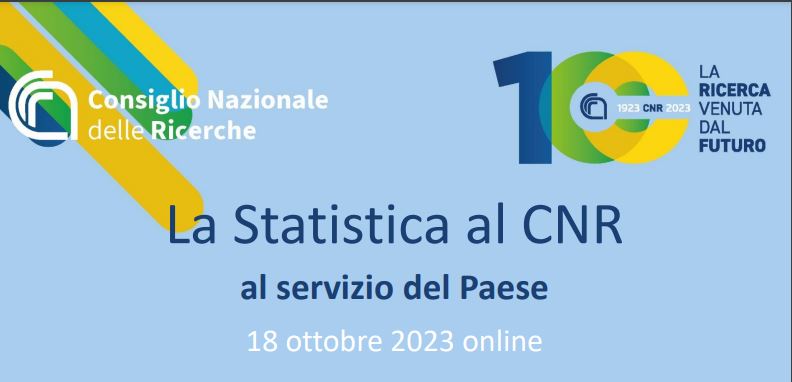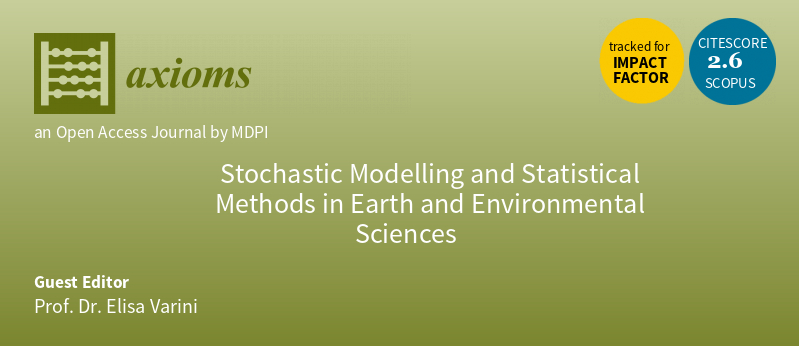Elisa Varini
2000 Degree in Mathematics, University of Parma, Italy
2005 PhD in Statistics, Università Bocconi, Milan, Italy
Research Activity
I am interested in stochastic modelling and Bayesian parametric statistics with special focus on point processes, state-space models, Markov Chain Monte Carlo methods, sequential Monte Carlo methods, statistical applications in Geophysics, seismic hazard assessment through data from historical catalogues, statistical methods for multi-hazard risk assessment.
Projects
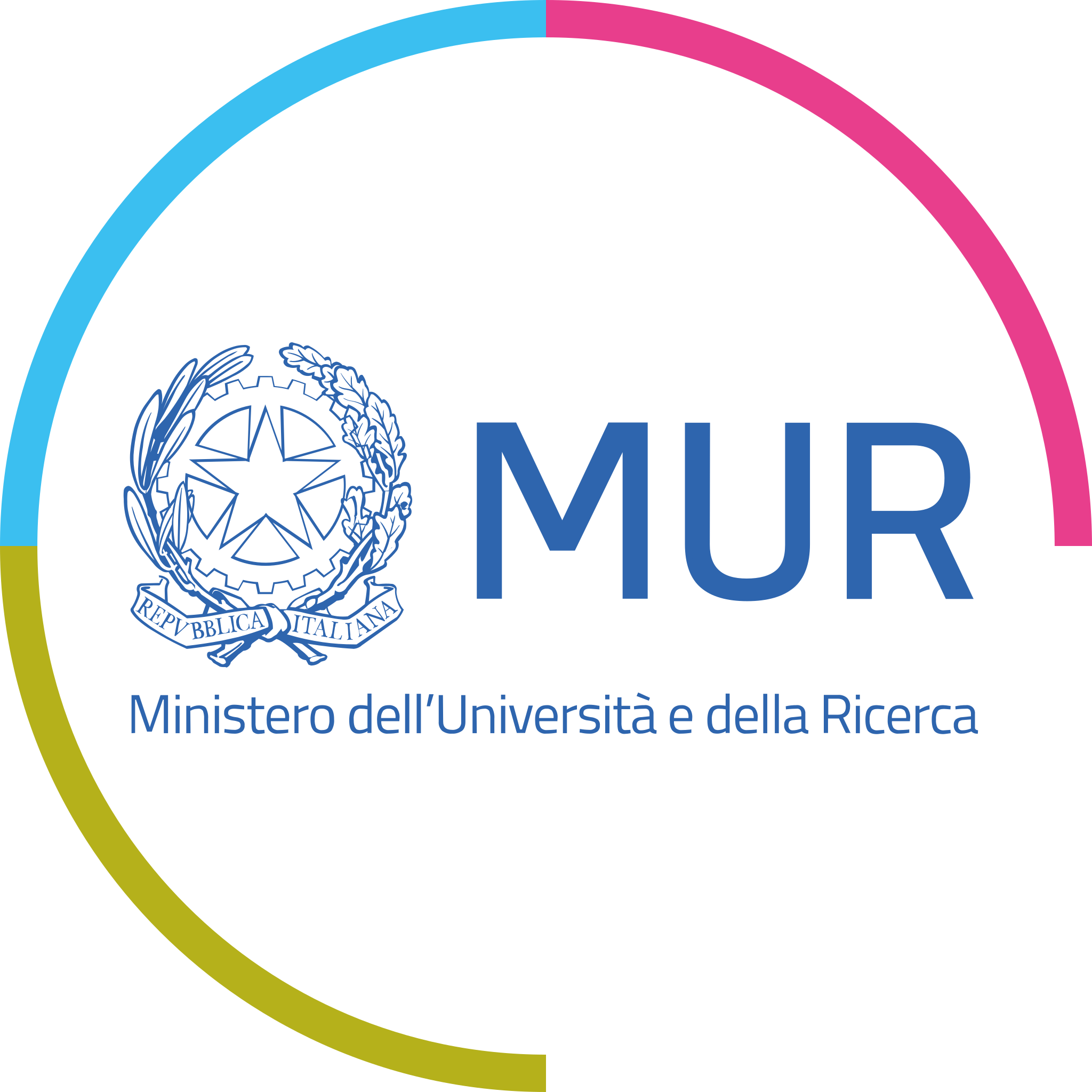





CN HPC spoke 5



RAISE spoke 3
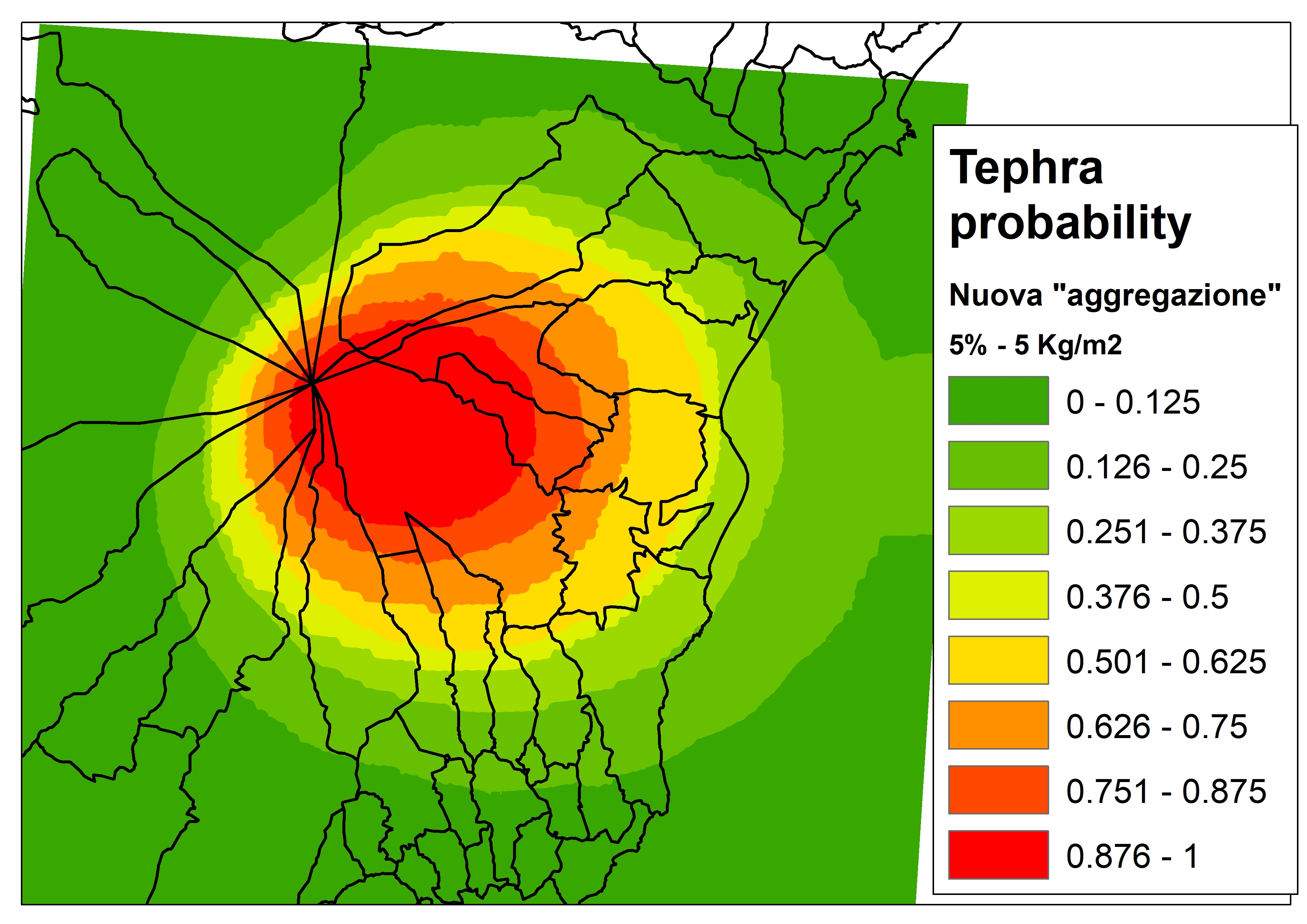
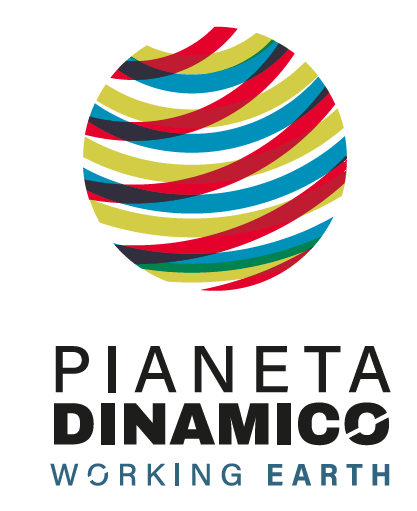

PANACEA
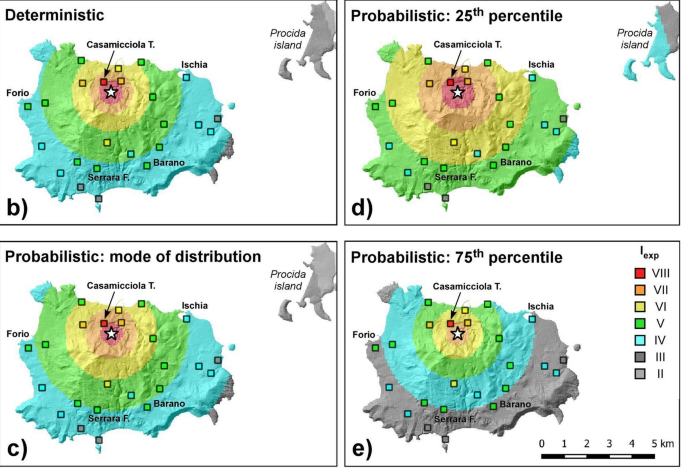
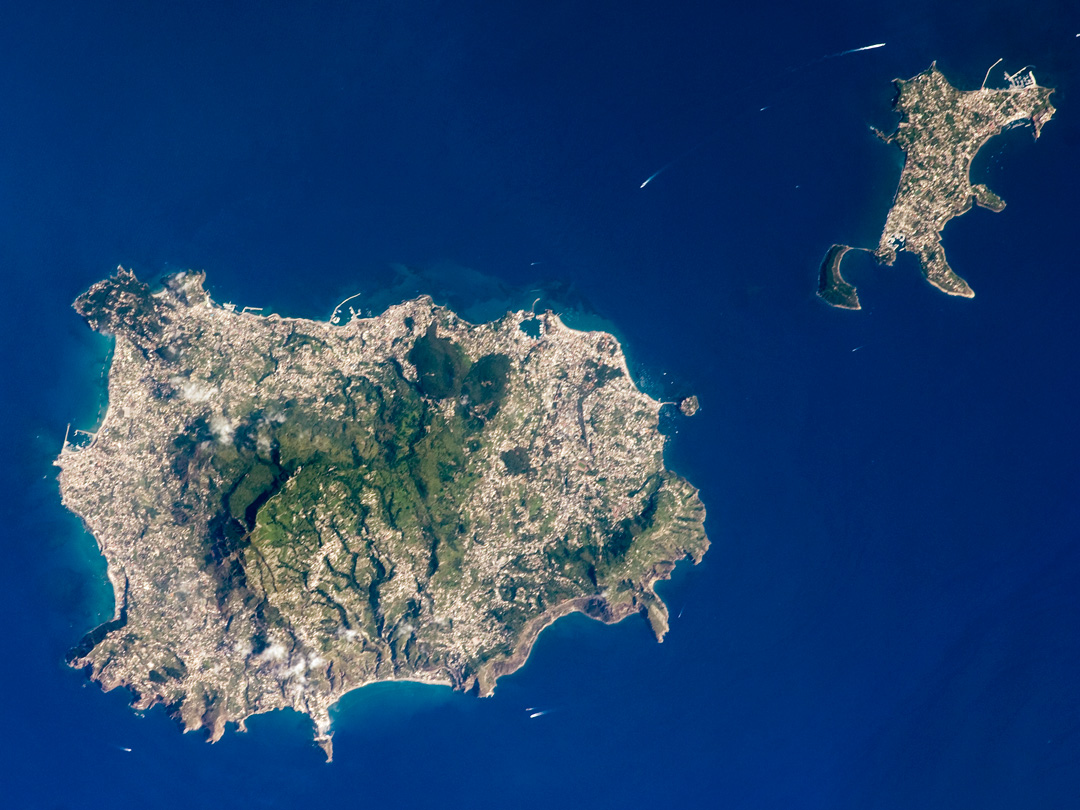

WP2 Volcanoes - Task 13

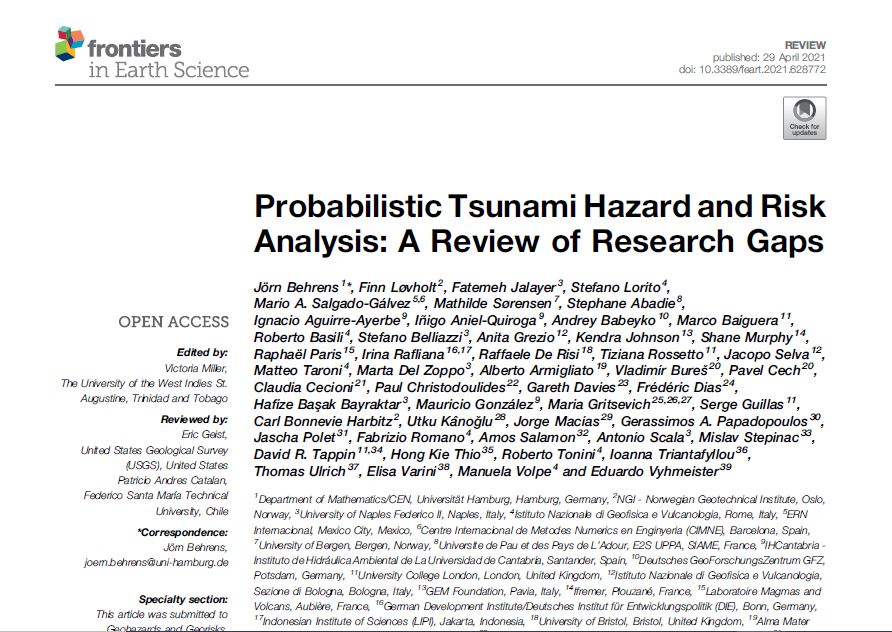

CA18109 AGITHAR
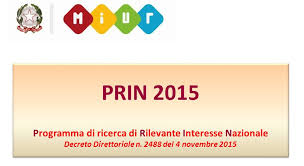
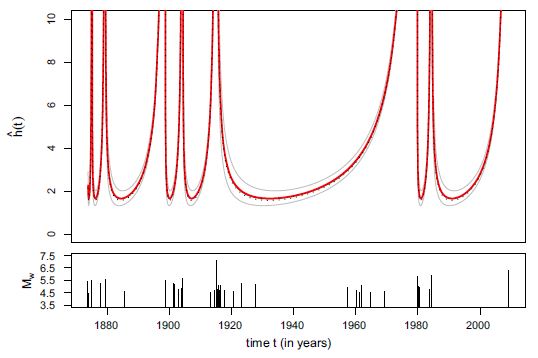

PRIN 2015 Prot. 20157PRZC4
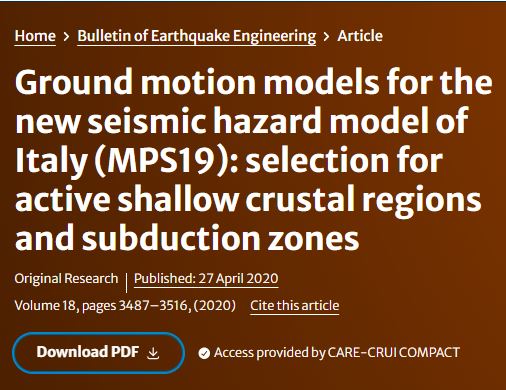
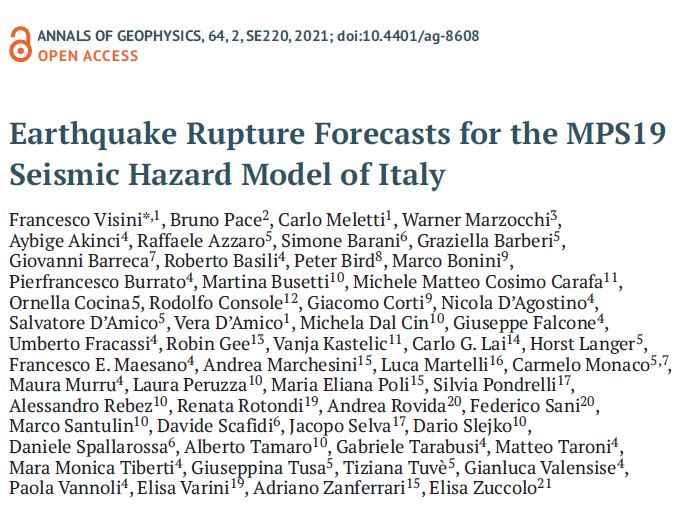

MPS19



PRIN 2022 E3DM
Publications
The strongest aftershock in seismic models of epidemic type
G. Molchan and E. Varini
We consider an epidemic-type aftershock model, ETAS(F), for a large class of distributions F determining the number of direct aftershocks. This class includes Poisson, Geometric, Negative Binomial dis...
CNR@People | DOI: 10.1093/gji/ggae001
2023, Journal article
Connection between variations of the probability distribution of the recurrence time and phases of the seismic activity
E. Varini and R. Rotondi
The probability distribution of the interevent time between two successive earthquakes has been the subject of numerous studies for its key role in seismic hazard assessment. In recent decades, many d...
CNR@People | DOI: 10.3390/e25101441
2023, Journal article
Macroseismic intensity attenuation models calibrated in Mw for Italy
A. A. Gomez-Capera, M. Santulin, M. D'Amico, V. D'Amico, M. Locati, C. Meletti and E. Varini
This study aims at developing new macroseismic intensity attenuation models valid for Italy by exploiting the most updated macroseismic dataset and earthquakes catalogue, as well as the information ob...
CNR@People | DOI: 10.1007/s10518-023-01822-8
2023, Journal article
Spatiotemporal analysis of the background seismicity identified by different declustering methods in northern Algeria and its vicinity
A. Benali, A. Jalilian, A. Peresan, E. Varini, and S. Idrissou
The main purpose of this paper was to, for the first time, analyse the spatiotemporal features of the background seismicity of Northern Algeria and its vicinity, as identified by different declusterin...
CNR@People | DOI: 10.3390/axioms12030237
2023, Journal article
The attenuation of macroseismic intensity in the volcanic island of Ischia (Gulf of Naples, Italy): comparison between deterministic and probabilistic models and application to seismic scenarios
R. Azzaro, S. D'Amico, R. Rotondi and E. Varini
In this paper, we tackle the problem of the intensity attenuation at Ischia, a critical parameter in a high seismic risk area such as this volcanic island. Starting from the new revised catalogue of l...
CNR@People | DOI: 10.1007/s10518-023-01724-9
2022, Journal article
Analysis of temporal variations of seismicity through non-extensive statistical physics
R. Rotondi, G. Bressan, and E. Varini
In recent years, there has been increasing interest in theoretical descriptions of seismicity in terms of statistical physics. Most aspects of these studies are encompassed by the concept of 'intermit...
CNR@People | DOI: 10.1093/gji/ggac118
2022, Journal article
Productivity within the epidemic-type seismicity model
G. Molchan, E. Varini, and A. Peresan
The productivity of a magnitude m event can be characterized in term of triggered events of magnitude above m-d: it is the number of direct descendants v(d) and the number of all descendants V(d). The...
CNR@People | DOI: 10.1093/gji/ggac269
2022, Journal article
Temporal variations of the probability distribution of voronoi cells generated by earthquake epicenters
R. Rotondi and E. Varini
The area of the cells of Voronoi tessellations has been modelled through different probability distributions among which the most promising are the generalized gamma and tapered Pareto distributions. ...
CNR@People | DOI: 10.3389/feart.2022.928348
2021, Journal article
Earthquake rupture forecasts for the MPS19 seismic hazard model of Italy
F. Visini, B. Pace, C. Meletti, W. Marzocchi, A. Akinci, R. Azzaro, S. Barani, G. Barberi, G. Barreca, R. Basili, P. Bird, M. Bonini, P. Burrato, M. Busetti, M.M. Cosimo Carafa, O. Cocina, R. Console, G. Corti, N. D'Agostino, S. D'Amico, V. D'Amico, M. Dal Cin, G. Falcone, U. Fracassi, R. Gee, V. Kastelic, C.G. Lai, H. Langer, F.E. Maesano, A. Marchesini, L. Martelli, C. Monaco, M. Murru, L. Peruzza, M.E. Poli, S. Pondrelli, A. Rebez, R. Rotondi, A. Rovida, F. Sani, M. Santulin, D. Scafidi, J. Selva, D. Slejko, D. Spallarossa, A. Tamaro, G. Tarabusi, M. Taroni, M.M. Tiberti, G. Tusa, T. Tuvè, G. Valensise, P. Vannoli, E. Varini, A. Zanferrari, and E. Zuccolo
In recent years, new approaches for developing earthquake rupture forecasts (ERFs) have been proposed to be used as an input for probabilistic seismic hazard assessment (PSHA). Zone- based approaches ...
CNR@People | DOI: 10.4401/ag-8608
2021, Journal article
Probabilistic tsunami hazard and risk analysis: A review of research gaps
J. Behrens, F. LÝvholt, F. Jalayer, S. Lorito, M.A. Salgado-Gálvez, M. SÝrensen, S. Abadie, I. Aguirre-Ayerbe, I. Aniel-Quiroga, A. Babeyko, M. Baiguera, R. Basili, S. Belliazzi, A. Grezio, K. Johnson, S. Murphy, R. Paris, I. Rafliana, R. De Risi, T. Rossetto, J. Selva, M. Taroni, M. Del Zoppo, A. Armigliato, V. Bures, P. Cech, C. Cecioni, P. Christodoulides, G. Davies, F. Dias, H.B. Bayraktar, M. González, M. Gritsevich, S. Guillas, C.B. Harbitz, U. Kânoglu, J. Macías, G.A. Papadopoulos, J. Polet, F. Romano, A. Salamon, A. Scala, M. Stepinac, D.R. Tappin, H.K. Thio, R. Tonini, I. Triantafyllou, T. Ulrich, E. Varini, M. Volpe and E. Vyhmeister
Tsunamis are unpredictable and infrequent but potentially large impact natural disasters. To prepare, mitigate and prevent losses from tsunamis, probabilistic hazard and risk analysis methods have bee...
CNR@People | DOI: 10.3389/feart.2021.628772
2021, Journal article
The new Italian seismic hazard model (MPS19)
C. Meletti, W. Marzocchi, V. D'Amico, G. Lanzano, L. Luzi, F. Martinelli, B. Pace, A. Rovida, M. Taroni, F. Visini, and MPS19 Working Group
We describe the main structure and outcomes of the new probabilistic seismic hazard model for Italy, MPS19 [Modello di Pericolosità Sismica, 2019]. Besides to outline the probabilistic framewor...
CNR@People | DOI: 10.4401/ag-8579
2020, Journal article
Ground motion models for the new seismic hazard model of Italy (MPS19): selection for active shallow crustal regions and subduction zones
G. Lanzano, L. Luzi, V. D'Amico, F. Pacor, C. Meletti, W. Marzocchi, R. Rotondi, and E. Varini
The aim of this paper is to identify the ground motion models (GMMs), applicable in active shallow crustal regions (ASCRs) and subduction zones (SZs), to be used for the new release of the seismic haz...
CNR@People | DOI: 10.1007/s10518-020-00850-y
2020, Journal article
Modelling background seismicity components identified by nearest neighbour and stochastic declustering approaches: the case of Northeastern Italy
A. Benali, A. Peresan, E. Varini, and A. Talbi
An adequate characterization of the temporal features of background seismicity, namely after removal of temporally and spatially clustered events (e.g. aftershocks), is a key element in several studie...
CNR@People | DOI: 10.1007/s00477-020-01798-w
2020, Journal article
Topological Comparison Between the Stochastic and the Nearest-Neighbor Earthquake Declustering Methods Through Network Analysis
E. Varini, A. Peresan, and J. Zhuang
Abstract Earthquake clustering is a significant feature of seismic catalogs, both in time and space. Several methodologies for earthquake cluster identification have been proposed in the literature in...
CNR@People | DOI: 10.1029/2020JB019718
2019, Journal article
Failure models driven by a self-correcting point process in earthquake occurrence modeling
R. Rotondi and E. Varini
The long-term recurrence of strong earthquakes is often modeled according to stationary Poisson processes for the sake of simplicity. However, renewal and self-correcting point processes (with nondecr...
CNR@People | DOI: 10.1007/s00477-019-01663-5
2016, Journal article
Probabilistic modelling of macroseismic attenuation and forecast of damage scenarios
R. Rotondi, E. Varini, and C. Brambilla
According to the idea now widespread that macroseismic intensity should be expressed in probabilistic terms, a beta-binomial model has been proposed in the literature to estimate the probability of th...
CNR@People | DOI: 10.1007/s10518-015-9781-7
2016, Journal article
Stress release model and proxy measures of earthquake size. Application to Italian seismogenic sources
E. Varini, R. Rotondi, R. Basili, and S. Barba
This study presents a series of self-correctingmodels that are obtained by integrating information about seismicity and fault sources in Italy. Four versions of the stress release model are analyzed, ...
CNR@People | DOI: 10.1016/j.tecto.2016.05.017
2016, Journal article
The role of the urban system dysfunction in the assessment of seismic risk in the Mt. Etna area (Italy)
F. Meroni, G. Zonno, R. Azzaro, S. D'Amico, T. Tuvè, C. S. Oliveira, M. A. Ferreira, F. Mota de Sá, C. Brambilla, R. Rotondi, and E. Varini
A procedure for seismic risk assessment is applied to the Mt. Etna area (eastern Sicily, Italy) through assessment of urban system dysfunction following the occurrence of an earthquake.The tool used i...
CNR@People | DOI: 10.1007/s10518-015-9780-8
2015, Journal article
Probability distribution of the waiting time in the stress release model: the Gompertz distribution
E. Varini and R. Rotondi
This communication aims to show some results on the distribution of the waiting time of a self-correcting point process that is known in seismology as the stress release model, and in actuarial scienc...
CNR@People | DOI: 10.1007/s10651-014-0307-2
2012, Journal article
Global statistical tests for clustered earthquake pattern discovery in Italy
R. Rotondi and E. Varini
It is a widely shared opinion that not only secondary earthquakes (aftershocks) but also main earthquakes tend to occur in time-space clusters. The importance of this assumption requires the applicati...
CNR@People | DOI: 10.4081/rg.2012.e9
2008, Journal article
A Monte Carlo method for filtering a marked doubly stochastic Poisson process
Varini E.
The author provides an approximated solution for the filtering of a state-space model, where the hidden state process is a continuous-time pure jump Markov process and the observations come from marke...
CNR@People | DOI: 10.1007/s10260-007-0051-y
2007, Journal article
Bayesian inference of stress release models applied to some Italian seismogenic zones
Rotondi R.; Varini E.
In this paper, we evaluate the seismic hazard of a region in southern Italy by analysing stress release models from the Bayesian viewpoint; the data are drawn from the most recent version of the param...
CNR@People | DOI: 10.1111/j.1365-246X.2006.03314.x
2006, Journal article
Bayesian analysis of marked stress release models for time-dependent hazard assessment in the western Gulf of Corinth
Rotondi R.; Varini, E.
We consider point processes defined on the space-time domain which model physical processes characterized qualitatively by the gradual increaseover time in some energy until a threshold is reached, af...
CNR@People | DOI: 10.1016/j.tecto.2006.03.005
2003, Journal article
Bayesian analysis of a marked point process: Application in seismic hazard assessment
Rotondi R. , Varini E.
N/A
CNR@People
A Bayesian approach to uncover temporal variations in seismicity
E. Varini and R. Rotondi
In this study we statistically analyze some earthquake sequences of Central Italy to identify possible temporal variations in the probability distributions of seismic parameters, such as magnitude and...
CNR@People
2023, Conference proceedings
A Bayesian study of temporal changes in seismicity
E. Varini and R. Rotondi
The q-exponential distribution, solution of a maximum entropy problem in the frame of nonextensive statistical mechanics, is useful for describing complex, non-linear dynamic systems that emerge in ma...
CNR@People
2023, Conference communications
Bayesian analysis of temporal changes in the probability distribution of seismic parameters and links with the seismic cycle
E. Varini and R. Rotondi
In the frame of nonextensive statistical mechanics, the q-exponential probability distribution arises from the maximization of the Tsallis entropy under appropriate constraints (Tsallis, J. Stat. Phys...
CNR@People
2023, Meeting abstracts
Statistical analysis of declustered catalogues in Northeastern Italy
E. Varini, A. Peresan, and A. Benali
The spatiotemporal distribution of the background seismicity identified by different declustering methods is analysed in the case of Northeastern Italy. In particular, the performance of two decluster...
CNR@People | DOI: 10.13120/2tf2-1j75
2023, Conference posters
Theoretical analysis of the productivity of seismic events
E. Varini, G. Molchan, and A. Peresan
We investigate earthquake clustering, a prominent feature of seismic catalogs, in terms of distribution of the number of triggered events as described by a branching process (Kagan and Knopoff, Phys. ...
CNR@People | DOI: 10.5194/egusphere-egu23-1897
2022, Meeting abstracts
Bayesian analysis of temporal variations of seismicity based on non-extensive statistical mechanics
E. Varini and R. Rotondi
In 1988, Tsallis introduced a non-additive entropy that has found applications in various fields such as physics, chemistry, medicine, informatics, linguistics, and economics. The concept also gained ...
CNR@People
2022, Conference proceedings
Earthquake declustering in Central Italy
E.Varini and A. Peresan
Several techniques for earthquake clusters identification have been developed in the literature. They usually rely on different underlying assumptions and lead to different classifications of earthqua...
CNR@People
2022, Conference posters
Earthquake productivity within general ETAS models
E. Varini, G. Molchan, and A. Peresan
Earthquake clustering is a prominent feature of seismic catalogs. Several models have been proposed to describe the triggering mechanism of earthquakes; nonetheless, some theoretical aspects have not ...
CNR@People
2022, Conference proceedings
Spatiotemporal analysis of catalogues declustered by different methods in Northeastern Italy region
A. Benali, A. Peresan, and E. Varini
The objective of this paper is to analyse the spatiotemporal patterns of the background seismicity identified by Nearest Neighbour (NN) and Stochastic Declustering(SD) methods, in Northeastern Italy. ...
CNR@People
2022, Meeting abstracts
Temporal variations of seismicity from the application of Tsallis entropy
E. Varini, R. Rotondi, and G. Bressan
The concept has recently taken hold that Earth's crust behaves as a complex, non-linear dynamic system characterized by long-range correlations (Bowman et al., 2008, and references therein). In statis...
CNR@People | Link
2021, Conference proceedings
A measure of criticality for a complex system in the context of non-extensive statistical mechanics
R. Rotondi and E. Varini
Probability distributions with power-law behaviours are observed in many complex systems, reflecting hierarchical or fractal structures. Statistical mechanics provides descriptions of these systems, a...
CNR@People
2021, Meeting abstracts
Declustering algorithms, background seismicity modeling and earthquake clusters analysis
E. Varini, A. Peresan, A. Benali
Declustering of seismic catalogs is required in wide range of earthquake forecasting and seismic hazard studies. However, different declustering methods may discriminate differently between background...
CNR@People
2021, Meeting abstracts
Markov modulated Poisson processes for stochastic modelling of background seismicity
E. Varini, A. Peresan and A. Benali
We investigate the statistical properties of declustered catalogs as obtained from the application of two different data-driven declustering algorithms, namely the nearest-neighbor method and the stoc...
CNR@People | DOI: 10.5194/egusphere-egu21-11036
2021, Meeting abstracts
Markov modulated Poisson processes for stochastic modelling of background seismicity
E. Varini, A. Peresan and A. Benali
Declustering a seismic catalog is a relevant preliminary step in many applications, such as earthquake forecasting and seismic hazard assessment. Declustering aims at partitioning an earthquake catalo...
CNR@People
2021, Meeting abstracts
MMPP Models of Background Seismicity: A Comparative Analysis for Different Declustering Algorithms
E. Varini, A. Peresan. A. Benali
Declustering a seismic catalog is a relevant preliminary step in many applications, such as earthquake forecasting and seismic hazard assessment. Declustering aims partitioning an earthquake catalog i...
CNR@People
2020, Conference proceedings
Bayesian stochastic modelling of the temporal evolutionof seismicity
E. Varini and R. Rotondi
Seismic hazard assessment is based on the research achievements developed in a lively multidisciplinary context involving seismologists, geologists, and geophysicists as well as computer scientists, m...
CNR@People
2020, Conference proceedings
Probabilistic damage scenarios from uncertain macroseismic data
E. Varini and R. Rotondi
Nowaday, macroseismic data are still essential for the seismic hazard assessment in several regions because they provide important knowledge on preinstrumental earthquakes, nedeed to compile historica...
CNR@People
2020, Conference proceedings
Variations in the temporal evolution of seismicity pointed out by non-extensive statistical physics approach
R. Rotondi, E. Varini
Physics-based models focus on the generation process of individual earthquakes butthe strong space-time interaction existing among the events of seismic sequences requires that the seismic activity be...
CNR@People
2019, Conference posters
Anisotropic attenuation of the macroseismic intensity
R. Rotondi and E. Varini
Aim of this study is to forecast the spatial distribution of the damages caused by an earthquake in the area surrounding its epicentre. The macroseismic intensity Is at a site is a direct measure of t...
CNR@People
2019, Conference proceedings
Anisotropic attenuation of the macroseismic intensity
R. Rotondi and E. Varini
Macroseismic intensity is a measure of the size of an earthquake in terms of the damages caused to the anthropic and natural environment; it is an ordinal quantity expressed through the twelve degrees...
CNR@People
2019, Conference proceedings
Another step in the path from macroseismic fields to probabilistic modeling of attenuation
R. Rotondi and E. Varini
It is beyond doubt that information provided by historical seismology can provide a valuable aid to understanding the evolution of the seismic phenomenon; we cannot therefore renounce to analyze macro...
CNR@People
2019, Conference proceedings
Capturing the complexity of earthquake sequences by different methods
A. Peresan, E. Varini and J. Zhuang
Earthquake clustering is an essential property of seismicity and the space-time patterns of the identified seismicclusters may provide important information about the structural and dynamic features o...
CNR@People
2019, Meeting abstracts
Declustering algorithms and network theory for the topological inspection of earthquake sequences
E. Varini, A. Peresan A, and J. Zhuang
The complexity of earthquake sequences is investigated by two declustering methods: the "nearest-neighbor" method (NN), which is based on nearest-neighbor distances between events in space-time-energy...
CNR@People
2019, Conference proceedings
Earthquake clustering and centrality measures
E. Varini, A. Peresan, and J. Zhuang
Earthquake clustering is a relevant feature of seismic catalogs, both in time and space. Several methodologies for earthquake cluster identification have been proposed in the literature in order to ch...
CNR@People
2019, Conference proceedings
On the examination of a criticality measure for a complex system in a forecasting perspective
Rotondi R. and Varini E.
Many complex phenomena concerning extreme events causing natural disasters exhibit power-law behavior, reflecting a hierarchical or fractal structure. These phenomena seem to be susceptible to descrip...
CNR@People | Link
2019, Conference proceedings
Selection and weighing of ground motion prediction equations for the new seismic hazard model of Italy (MPS19)
V. D'Amico, L. Luzi, G. Lanzano, F. Pacor, R. Puglia, W. Marzocchi, C. Meletti, R. Rotondi, and E. Varini
In the framework of the project for the update of the national seismic hazard model (MPS19), a task was devotedto selecting and weighing the predictive equations for the ground motion parameters and t...
CNR@People | Link
2019, Conference proceedings
Spatio-temporal earthquake clustering: insights and outlooks from Network Analysis
E. Varini, A. Peresan, and J. Zhuang
The seismic history of a region is characterized by its earthquake clusters, namely periods when the occurrence rate of earthquakes is higher than usual. Clustering in space and time is an essential k...
CNR@People | DOI: 10.6092/GRASPA19
2018, Conference proceedings
A measure of the criticality of a seismogenic system from the viewpoint of statistical physics
R. Rotondi and E. Varini
Despite the extreme complexity that characterizes the mechanism of the earthquake generation process, some phenomenological features seem to be identifiable in the collective properties of seismicity....
CNR@People
2018, Conference proceedings
A new proposal for stochastic modeling of earthquake occurrence through a compound model
R. Rotondi, E. Varini
Earthquakes are natural phenomena that affect multiple time-space scales and of which we only have indirect measurements strongly affected by uncertainty. These phenomena may be investigated on differ...
CNR@People
2018, Conference proceedings
Clustering macroseismic fields by statistical data depth functions
C. Agostinelli, R. Rotondi, and E. Varini
The macroseismic intensity is an ordinal variable that describes the seismic damage effects of an earthquake. The collection of intensity values recorded at sites of an area hit by an earthquake is ca...
CNR@People | DOI: 10.1007/978-3-319-55708-3_16
2018, Conference proceedings
Comparison of two clustering algorithms for the characterization of earthquake clusters
E. Varini, A. Peresan, R. Rotondi, S. Gentili
Earthquake clusters are prominent in the spatio-temporal distribution of any seismic catalog; they commonly show different patterns and complexities that are deemed to be strictly inherent to the phys...
CNR@People
2018, Meeting abstracts
Investigating the spatial features of earthquake clusters: insights from different methods
A. Peresan, R. Rotondi, E. Varini, and S. Gentili
Earthquake clustering is a fundamental aspect of seismicity, with typical features in space, time, and energy domains that may provide key information about earthquake dynamics and about the physical ...
CNR@People | Link
2018, Conference proceedings
Seismic scenarios and hazard assessment in the island of Ischia (Neapolitan volcanic district, Italy): a probabilistic approach based on macroseismic intensity data
R. Azzaro, S. D'Amico, R. Rotondi, E. Varini
On August 21, 2017, a Md 4.0 earthquake struck the volcanic island of Ischia (Gulf of Naples, Italy), producing heavy damage and two casualties at Casamicciola (Azzaro et al., 2017), locality known fo...
CNR@People
2018, Conference proceedings
Space-time earthquake clustering: nearest-neighbor and stochastic declustering methods in comparison
E. Varini, A. Peresan, R. Rotondi, and S. Gentili
Earthquakes do not occur randomly in space and time; rather, they tend to group into clusters that can be classified according to their different properties, presumably related to the specific geophys...
CNR@People
2018, Conference proceedings
Spatial features of earthquake clusters investigated by different approaches
A. Peresan, E. Varini, S. Gentili, R. Rotondi
Earthquake clustering is a prominent feature of seismic catalogs, both in time and space. Several methodologies for earthquake cluster identification have been proposed in the literature with at least...
CNR@People
2018, Conference proceedings
The attenuation of macroseismic intensity in Italy: A probabilistic approach to seismic scenarios and hazard assessment
E. Varini and R. Rotondi
A new Italian seismic hazard map is going to be developed in the framework of an agreement between the Italian National Institute of Geophysics and Volcanology (INGV) and the Department of Civil Prote...
CNR@People
2017, Meeting abstracts
A comparative analysis of methods for identification and characterization of earthquake clusters
R. Rotondi, A. Peresan, S. Gentili, and E. Varini
Identification and statistical characterization of seismic clusters may provide useful insights about the features of seismic energy release and their relation to physical properties of the crust with...
CNR@People
2017, Meeting abstracts
A failure process driven by a self-correcting model
E. Varini and R. Rotondi
N/A
CNR@People | DOI: 10.21420/G23S33
2017, Conference communications
Bayesian inference and predictive accuracy of failure models driven by a self-correcting point process for long-term recurrence of strong earthquakes
E. Varini and R. Rotondi
The process by which earthquakes are generated is still unknown. Its understanding is aimed at reducing and managing the seismic risk as well as at being a challenging research field. The fragmentary ...
CNR@People
2017, Meeting abstracts
Combining failure and self-correcting processes in seismic risk analysis
R. Rotondi and E. Varini
Two widely known features of the earthquake generation process are the following:- earthquakes tend to occur in clusters, sometimes, but not only, referred to as swarms, foreshocks and aftershocks act...
CNR@People
2017, Meeting abstracts
Failure processes driven by a selfcorrecting model. Application to earthquake sequences.
E. Varini and R. Rotondi
Earthquake occurrence is usually modelled by point processes. The longterm recurrence of strong earthquakes is often modelled by Poisson process or self-correcting point processes with nondecreasing ...
CNR@People
2017, Conference proceedings
Identification of earthquake clusters through a new space-time-magnitude metric
R. Rotondi, A. Peresan, S. Gentili, and E. Varini
We consider a metric that exploits the statistical properties of seismicity to quantify the correlation between earthquakes in a given catalogue. The method is based on nearest-neighbour distance betw...
CNR@People
2017, Conference proceedings
Investigating features of earthquake clustering: a comparative analysis for selected sequences In Italy
A. Peresan, R. Rotondi, E. Varini, and S. Gentili
A number of studies aimed at seismic hazard assessment, as well as at the space-time analysis of earthquakes occurrence (e.g. Gentili et al., 2017), require preliminary declustering of the earthquake ...
CNR@People
2017, Conference proceedings
L'attenuazione dell'intensità macrosismica nell'isola vulcanica di Ischia: confronto tra modelli deterministici e probabilistici e applicazione per la generazione di scenari di danno
R. Azzaro, S. D'Amico, R. Rotondi, and E. Varini
In questo lavoro vengono discusse le problematiche relative all'attenuazione dell'intensità macrosismica per l'area vulcanica di Ischia, che il recente evento del 21 agosto ha messo drammaticam...
CNR@People
2017, Conference proceedings
On a failure process driven by a self-correcting model in seismic hazard assessment
R. Rotondi and E. Varini
Two widely noted features of earthquake generation process are the following: a) earthquakes tend to occur in clusters, and b) fault ruptures that generate earthquakes decrease the amount of strain pr...
CNR@People | DOI: 10.36253/978-88-6453-521-0
2017, Conference proceedings
Selection and ranking of the ground motion prediction equations for the new Italian hazard map (MPS16)
G. Lanzano, L. Luzi, R. Rotondi, E. Varini, and W. Marzocchi
The MPS16 project, started in 2015, aims at updating the existing reference seismic hazard model for Italy, released in 2004-2006 (Stucchi et al., 2011). As known, ground-motion prediction equations (...
CNR@People
2016, Meeting abstracts
A new statistical time-dependent model of earthquake occurrence: failure processes driven by a self-correcting model
R. Rotondi and E. Varini
The long-term recurrence of strong earthquakes is often modelled by the stationary Poisson process for the sake of simplicity, although renewal and self-correcting point processes (with non-decreasing...
CNR@People | Link
2016, Conference proceedings
Clustering macroseismic fields by statistical data depth functions
C. Agostinelli, R. Rotondi, and E. Varini
The size of historical earthquakes is given by the macroseismic intensity, an ordinal variable expressed by different scales and closely related tothe effects produced by an earthquake on humans, buil...
CNR@People | Link
2016, Conference posters
On failure processes driven by a self-correcting model. Application to sequences of seismic events
R. Rotondi and E. Varini
The long-term recurrence of strong earthquakes is often modelled by the stationary Poisson process for the sake of simplicity, although renewal and self-correcting point processes (with non-decreasing...
CNR@People
2016, Meeting abstracts
On the predictive information criteria for model determination in seismic hazard analysis
E. Varini and R. Rotondi
Many statistical tools have been developed for evaluating, understanding, and comparing models, from both frequentist and Bayesian perspectives. In particular, the problem of model selection can be ad...
CNR@People | Link
2016, Meeting abstracts
Ranking ground-motion prediction models in different seismotectonic contexts: the experience for the new Italian seismic hazard model (MPS16)
G. Lanzano, L. Luzi, F. Pacor, R. Puglia, V. D'Amico, C. Meletti, W. Marzocchi, R. Rotondi, and E. Varini
The MPS16 project, started in 2015, aims at updating the existing reference seismic hazard model for Italy, released in 2004-2006. As known, ground-motion prediction equations (GMPE) play a basic role...
CNR@People
2015, Conference proceedings
Applying the disruption index procedure to evaluate the urban seismic risk in the Mt. Etna area (Italy)
G. Zonno, R. Azzaro, F. Meroni, S. D'Amico, T. Tuvè, M. A. Ferreira, F. Mota de Sá, C. S. Oliveira, C. Brambilla, R. Rotondi, and E. Varini
The Disruption Index is used here for the assessment of urban disruption in the Mt. Etna area after a natural disaster. The first element of the procedure is the definition of the seismic input, which...
CNR@People | DOI: 10.1007/978-3-319-09048-1_71
2015, Conference posters
On the convolution of stochastic processes for modelling strong earthquake occurrences: a multi-rupture model driven by a self-correcting model
R. Rotondi and E. Varini
Two widely noted features of earthquake generation are the following:- earthquakes tend to occur in clusters, sometimes, but not only, referred as "swarms", "foreshocks activity" and "aftershocks acti...
CNR@People | Link
2015, Meeting abstracts
Statistical data depth for clustering macroseismic fields
C. Agostinelli, R. Rotondi, and E. Varini
The size of historical earthquakes is given by the macroseismic intensity, an ordinal variable expressed by different scales and closely related to the effects produced by an earthquake on humans, bui...
CNR@People
2014, Conference posters
A state-space model for the analysis of seismic swarms.
E. Varini and Y. Ogata
N/A
CNR@People
2014, Conference proceedings
Macroseismic attenuation from probabilistic perspective in European countries
R. Rotondi, E. Varini, and C. Brambilla
N/A
CNR@People
2014, Conference proceedings
On assessing importance of components in dysfunction urban systems given an earthquake: the case of Mt Etna region
G. Zonno, F. Meroni, S. D'Amico, T. Tuvè, R. Azzaro, C.S. Oliveira, M.A. Ferreira, F. Mota de Sà, C. Brambilla, R. Rotondi, and E. Varini
N/A
CNR@People
2014, Conference communications
Probabilistic seismic hazard analysis from local macroseismic history: a new implementation of the SASHA code
D. Albarello, V. D'Amico, R. Rotondi, E. Varini, and G. Zonno
N/A
CNR@People
2014, Conference proceedings
Probabilistic seismic hazard estimates from local seismic history - A tool for risk assessment in urban areas
D. Albarello, V. D'Amico, R. Rotondi, E. Varini, and G. Zonno
N/A
CNR@People
2014, Conference proceedings
Statistical modelling for identification of earthquake clusters
E. Varini and Y. Ogata
N/A
CNR@People | Link
2014, Conference communications
The Gompertz waiting time distributions of the stress release model in the bayesian framework.
E. Varini and R. Rotondi
N/A
CNR@People | Link
2014, Conference proceedings
UPSTRAT-MAFA European project - Developments and achievements
G. Zonno, R. Rotondi, C.S. Oliveira, A. Carvalho, M. Garcia-Fernandez, R. Sigbjörnsson, and Working Group of UPStrat-MAFA project
N/A
CNR@People
2013, Conference proceedings
A beta-binomial model for macroseismic attenuation. Case studies in European countries
R. Rotondi, C. Brambilla, and E. Varini
N/A
CNR@People
2013, Conference communications
Application of simulated data.
G. Zonno, E. Varini, and A. Carvalho
N/A
CNR@People
2013, Meeting abstracts
Generalized probabilistic seismic hazard estimates in terms of macroseismic intensity as a tool for risk assessment in urban areas.
D. Albarello, V. D'Amico, R. Rotondi, E. Varini, and Zonno G.
N/A
CNR@People
2013, Conference proceedings
Modelling the occurrence of strong earthquakes through the superposition of two stochastic processes: a multi-rupture model driven by a self-correcting model.
R. Rotondi and E. Varini
N/A
CNR@People
2013, Conference proceedings
On the macroseismic attenuation from the probabilistic perspective.
R. Rotondi, C. Brambilla, and E. Varini
N/A
CNR@People
2013, Conference posters
On the macroseismic attenuation from the probabilistic perspective. Applications in European countries.
R. Rotondi, C. Brambilla, and E. Varini
N/A
CNR@People
2013, Meeting abstracts
On the stress release models with new tips from geophysics: Bayesian estimation, forecasting and validation.
E. Varini, R. Rotondi, R. Basili, S. Barba, and B. Betrò
N/A
CNR@People
2013, Conference communications
Probabilistic analysis of macroseismic data: modelling.
R. Rotondi, C. Brambilla, and E. Varini
N/A
CNR@People | Link
2013, Conference communications
Probabilistic analysis of macroseismic data: results.
R. Rotondi, C. Brambilla, and E. Varini
N/A
CNR@People | Link
2013, Meeting abstracts
Self-correcting models driven by seismic strain, moment or energy. Applications to the Italian seismicity.
E. Varini, R. Rotondi, R. Basili, S. Barba, and B. Betrò
N/A
CNR@People
2013, Conference proceedings
The disruption index evaluation in the urban Mt. Etna area (Italy).
F. Meroni, R. Azzaro, S. D'Amico, T. Tuvè, G. Zonno, A.F. Ferreira, F. Mota de Sà, C.S. Oliveira, C. Brambilla, R. Rotondi, and E. Varini
N/A
CNR@People
2013, Conference proceedings
Validation of macroseismic scenarios from a beta-binomial model.
R. Rotondi, C. Brambilla, and E. Varini
N/A
CNR@People
2012, Meeting abstracts
A self-correcting stochastic model of earthquake occurrence enhanced by geologic fault data
R. Rotondi, E. Varini, R. Basili, S. Barba, and B. Betrò
N/A
CNR@People | Link
2012, Conference communications
A self-correcting stochastic model of earthquake occurrence enhanced by geological fault data
R. Rotondi, E. Varini, R. Basili, S. Barba, and B. Betrò
We analyse sequences of earthquakes of Mw >= 5.3 drawn from the Parametric Catalog of Italian Earthquakes CPTI04 and associated with the composite seismogenic sources of the Database of Individual S...
CNR@People
2012, Conference communications
Estimation of macroseismic scenarios in European countries
R. Rotondi, R. Sigbjörnsson, E. Varini, and C. Brambilla
This study is being carried out in the framework of the EU research project "Urban Disaster Prevention Strategies Using MAcroseismic Fields and FAult Sources" (Grant Agreement n. 230301/2011/613486/SU...
CNR@People | Link
2012, Meeting abstracts
Estimation of macroseismic scenarios in European countries.
R. Rotondi, R. Sigbjornsson, E. Varini, and C. Brambilla
N/A
CNR@People | Link
2012, Conference proceedings
Probabilistic analysis of macroseismic fields: Iceland case study
R. Rotondi, C. Brambilla, E. Varini, and R. Sigbjörnsson
In this work our objectives are, first, to describe a probabilistic model aimed at forecasting macroseismic fieldsand, second, to present the results and findings obtained by applying the model to two...
CNR@People
2012, Conference proceedings
Self-correcting models with different measures of the earthquake strength
E. Varini, R. Rotondi, R. Basili, S. Barba, and B. Betrò
N/A
CNR@People
2012, Conference proceedings
Urban disaster-prevention strategies using macroseismic fields and fault sources
G. Zonno, R. Azzaro, F. Bianco, P. Cusano, S. D'Amico, V. D'Amico, S. Falsaperla, D. Galluzzo, H. Langer, F. Meroni, G. Musacchio, R. Nave, F. Sansivero, L. Scarfi, R. Rotondi, C. Brambilla, E. Varini, C.S. Oliveira, M.A. Ferreira, M. Lopes, F. Mota de Sá, J.C. Nunes, A. Carvalho, M.L. Sousa, S. Raposo, M. Garcia-Fernandez, A. Beltran, J. Jenni, M.J. Jimenez, R. Sigbjörnsson, A.E. Bernhardsdottir, S. Olafsson, R. Rupakhety, S.U. Sigurdsson, S. Thorvaldsdottir, and D. Albarello
This contribution presents the general framework of the European project UPStrat-MAFA "Urban disaster Prevention Strategies using MAcroseismic Fields and FAult Sources" and its ongoing activities. A u...
CNR@People
2011, Conference proceedings
Clustering and classification in hazard evaluation
R. Rotondi, E. Varini, and G. Zonno
This study is aimed at characterising the attenuation of earthquakes in Italy by exploiting the information provided by the macroseismic fields of the DBMI04 database. The analysis was carried out for...
CNR@People
2011, Conference proceedings
Is space-time interaction real or apparent in seismic activity?
R. Rotondi and E. Varini
N/A
CNR@People
2011, Meeting abstracts
Statistical tests for the retrospective detection of space-time clusters of seismic events.
E. Varini and R. Rotondi
N/A
CNR@People
2010, Meeting abstracts
Occurrence Probability in Seismogenic Areas of DISS3.0.2 by Renewal Process: Importance of the Consistency between Model Assumptions and Input Data
R. Rotondi, S. Barba, R. Basili, E. Varini, and B. Betrò
In a previous project the long-term occurrence probability within various time intervals for the seismogenic areas of DISS3.0.2 was estimated on the basis of a nonparametric estimation of the density ...
CNR@People
2010, Conference proceedings
Seismic hazard assessment by slip, strain and moment-based self-correcting models
E. Varini, R. Rotondi, B. Betrò, S. Barba, and R. Basili
N/A
CNR@People
2010, Meeting abstracts
Statistical significance of earthquake space-time clustering: Italy case
R. Rotondi and E. Varini
N/A
CNR@People
2009, Conference communications
Bayesian analysis of a state-space model with a nonstationary state process
Varini E., Rotondi R.
N/A
CNR@People
2009, Conference communications
Bayesian estimation of the conditional intensity function in self-correcting point processes applied to the seismic activity of Italian tectonic regions
Rotondi R., Varini E.
N/A
CNR@People
2009, Conference proceedings
Bayesian inference of a doubly stochastic Poisson process with a non-stationary state process
Rotondi R., Varini E.
A doubly stochastic Poisson process is proposed in order to study seismic sequences. It is a state-space model where the state process jumps among three possible states, each of them characterised by ...
CNR@People
2009, Conference proceedings
Multi-step analysis of seismic hazard through point processes
Varini E., Rotondi R.
In this article the seismic hazard assessment is the final goal of a multi-step procedure in which the reliability of the final result depends strongly on the answers given to the intermediate issues....
CNR@People
2009, Conference proceedings
Self-correcting models for seismic hazard assessment in comparison
Varini E., Rotondi R., Betrò B., Barba S., Basili R.
The historical seismic data are suitably modelled by the self-correcting point processes whose conditional intensity functions give the instantaneous occurrence probability of at least one event. Thes...
CNR@People
2009, Meeting abstracts
Time-dependent seismic hazard assessment through a self-correcting point process for the slip
Varini E., Rotondi R.
N/A
CNR@People
2008, Conference proceedings
A HMM involving stress release and Etas models
Varini E., Rotondi R.
N/A
CNR@People
2008, Conference proceedings
Examples of How the Stochastic Modelling Helps in Understanding the Earthquake Dynamics
Rotondi R., Varini E.
N/A
CNR@People
2008, Conference proceedings
Filtering and inference of a doubly stochastic Poisson process
Varini E., Chopin N., Rotondi R.
N/A
CNR@People
2008, Conference communications
Stochastic analysis of natural hazards
B. Betrò (oratore), A. Bodini , C. Brambilla, R. Rotondi E. Varini
N/A
CNR@People
2007, Conference communications
Likelihood inference for continuous-time hidden Markov models.
Chopin Nicolas, Varini E.
N/A
CNR@People
2007, Conference proceedings
Likelihood inference for continuous-time state-space models
Chopin N., Varini E.
In questo lavoro consideriamo un processo di Poisson doppiamente stocastico, che può essere interpretato come un modello stato-spazio non lineare a tempo continuo. Abbiamo sviluppato un algorit...
CNR@People
2007, Conference posters
Nonstationary Markov processes in phase transition modelling
Rotondi R., Varini E.
The geophysical and geological features of a seismic region determine the succession of the earthquake occurrences; we assume that their temporal variations produce state changes in the physical syste...
CNR@People
2007, Conference proceedings
Particle filtering for continuous-time hidden Markov models
Chopin N., Varini E.
We consider continuous-time models where the observed process depends on an unobserved jump Markov Process. We develop a sequential Monte Carlo algorithm which makes it possible to filter and smooth t...
CNR@People | DOI: 10.1051/proc:071903
2006, Meeting abstracts
Modelli di rilascio di sforzo e aree sismogenetiche
Rotondi R. e Varini E.
In questo lavoro presentiamo i risultati relativi ad un'analisi bayesiana di modelli di rilascio di sforzo applicati alla zona dell'Italia meridionale corrispondente al Sannio-Matese-Ofanto-Irpinia.
CNR@People
2006, Conference proceedings
Particle filtering of a state-space model for seismic sequences
Chopin N., Varini E.
N/A
CNR@People
2006, Conference communications
Reconciling short- and long-term seismic modelling
Rotondi R. e Varini E.
N/A
CNR@People
2005, Conference proceedings
Stochastic simulation of point process models for forecasting seismic events
Rotondi R., Varini E.
N/A
CNR@People
2004, Conference proceedings
Valutazione della pericolosità sismica nella regione Sannio-Matese-Ofanto-Irpinia attraverso modelli di rilascio di sforzo
Rotondi R., Varini E.
Discutiamo in questo articolo l'applicazione di alcuni modelli di rilascio disforzo - stress release - alla sequenza di forti terremoti registrati in una regione sismogenetica dell'Italia meridionale....
CNR@People
Task B - Probabilistic analysis of macroseismic data to forecast damage scenarios
R. Rotondi, C. Brambilla, E. Varini, and G. Zonno
N/A
CNR@People | Link
2013, Technical report
Strain-, moment- and energy-based self-correcting models for probabilistic seismic hazard analysis in Italy.
E. Varini, R. Rotondi, R. Basili, S. Barba, and B. Betrò
This study presents a series of self-correcting models that were obtained by integrating information about seismicity and fault sources in Italy. Four versions of the stress release model are analyzed...
CNR@People
2011, Research report
Impatto dei cambiamenti climatici sulle produzioni agricole: strategie di adattamento ai processi di desertificazione nelle aree mediterranee (CYCAS-MED). Report finale - Parte A.
A. Bodini, C. Cesaraccio, M. Dubrovsky, P. Duce, E. Varini, and P. Zara
N/A
CNR@People
Statistica bayesiana per lo studio di sequenze di terremoti
E. Varini
Presentazione nell'ambito del convegno La Statistica al CNR al Servizio del Paese - Edizione del Centenario.Abstract della presentazione:La sismologia moderna nasce a metà del XIX secolo nella ...
CNR@People | Link
2014, Multimedia product
Urban Disaster Prevention Strategies using MAcroseismic Fields and FAult Sources
R. Nave, F. Sansivero, G. Zonno (DVD contents revision and structuring), and Partners of UPStrat-MAFA Project
This CD-Rom is a dissemination product of the EU project "Urban disaster Prevention Strategies using MAcroseismic Fields and FAult Sources" (UPStrat-MAFA); it summarizes the main results obtained in t...
CNR@People
2025, Journal Article
Variations in probability distributions as indicators of seismic phases: a case study from Chile
R. Rotondi , O. Nicolis, E. Varini, F. Ruggeri
Seismological Research Letters, accepted for pubblication
DOI: 
 
2025, Journal Article
A target-based, multi-hazard assessment approach as a tool for supporting decision-making in volcanic areas: a case study in Mt. Etna, Italy
A. Garcia, L. Sandri, V. Pessina, F. Meroni, E. Varini, A. Cappello
Annals of Geophysics, accepted for pubblication
DOI: 
2025, Journal Article
Volcano-tectonic seismicity and related hazard: a component of the multi-hazard assessment in the highly exposed region of Mt. Etna (Italy)
S. D'Amico, R. Azzaro, G. Tusa, T. Tuvè, E. Varini
Annals of Geophysics, 68 (1), pp. 1-17
DOI: 10.4401/ag-9152
 
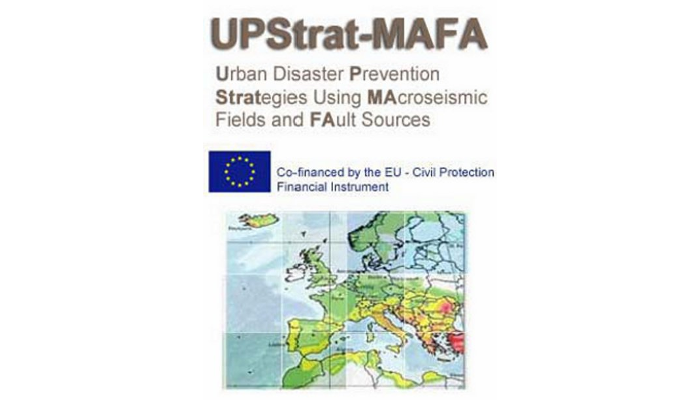
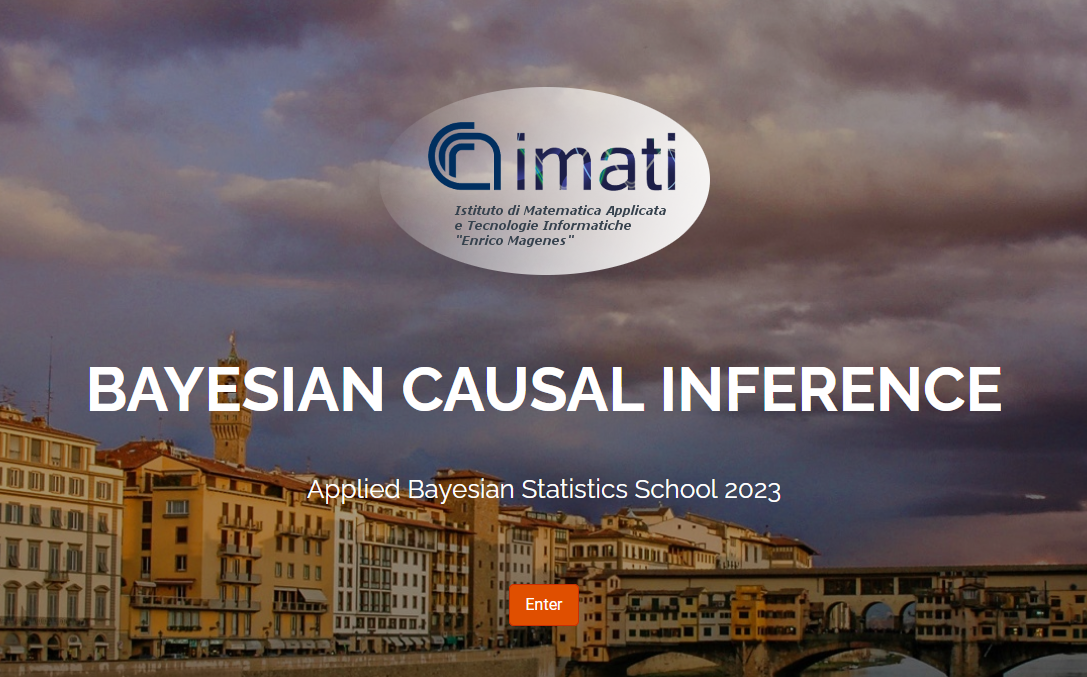




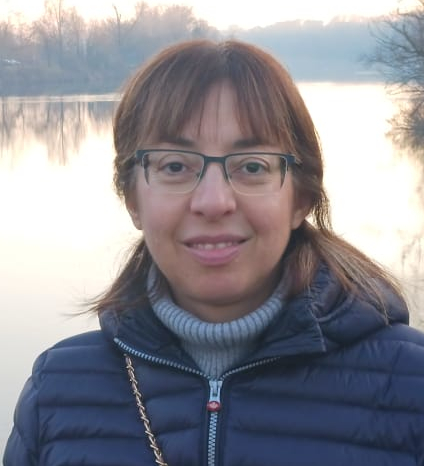
.jpg)
